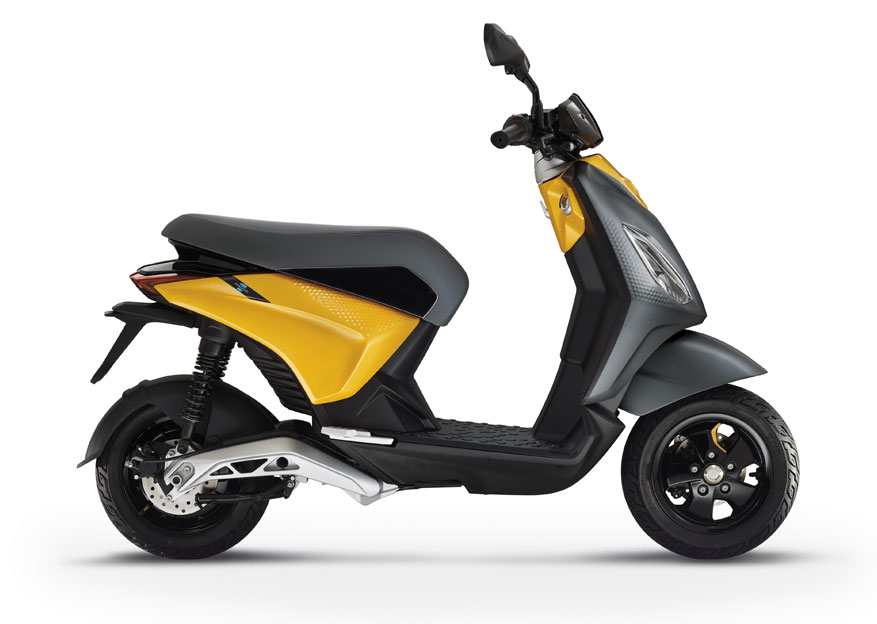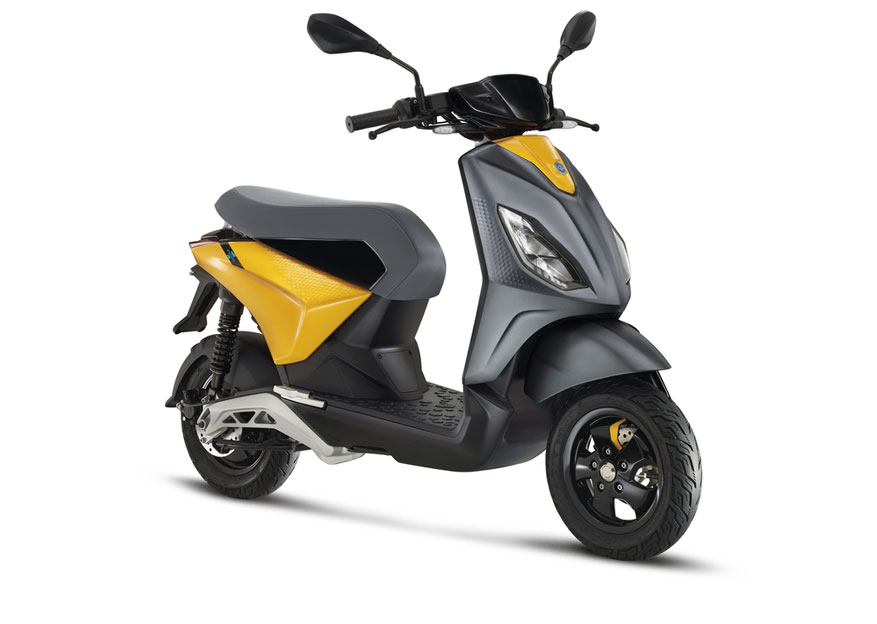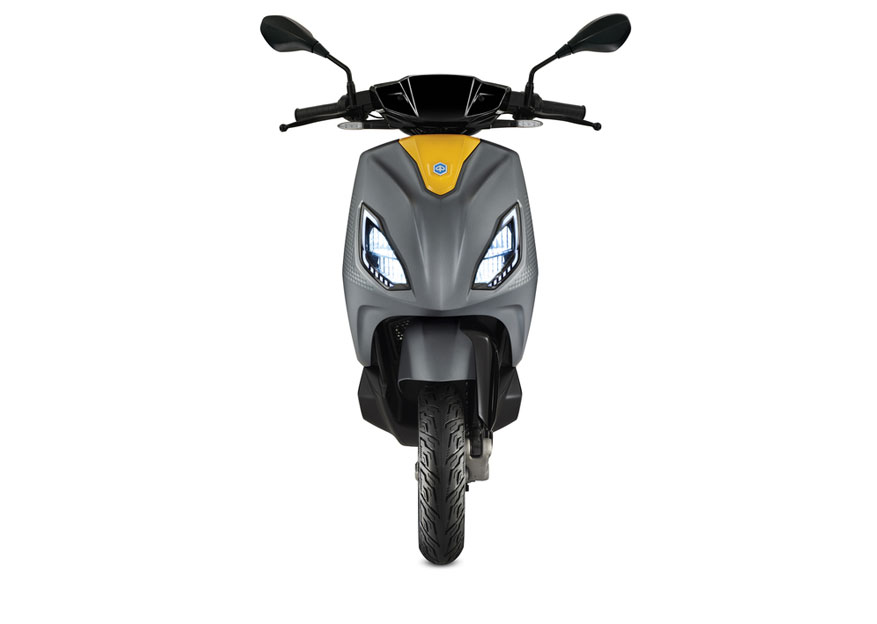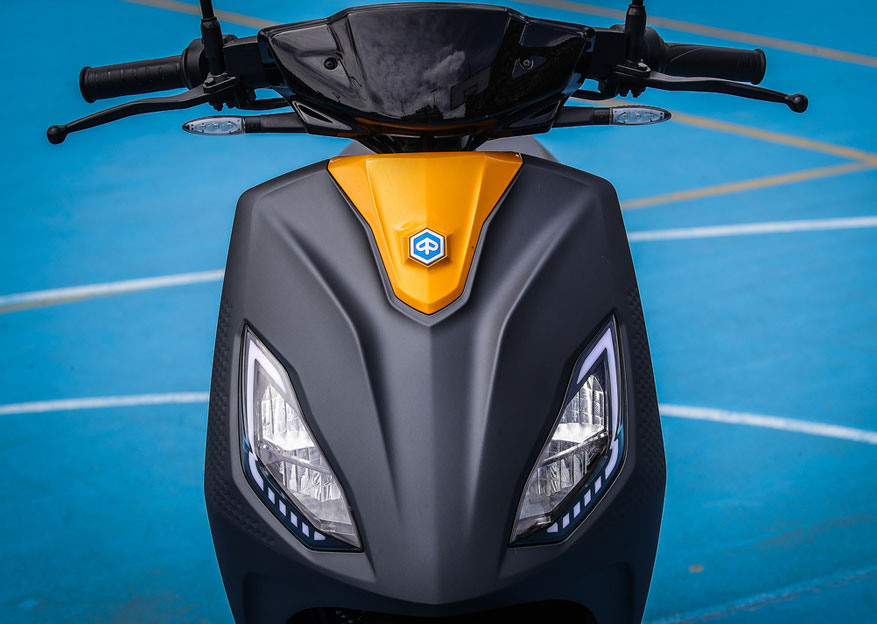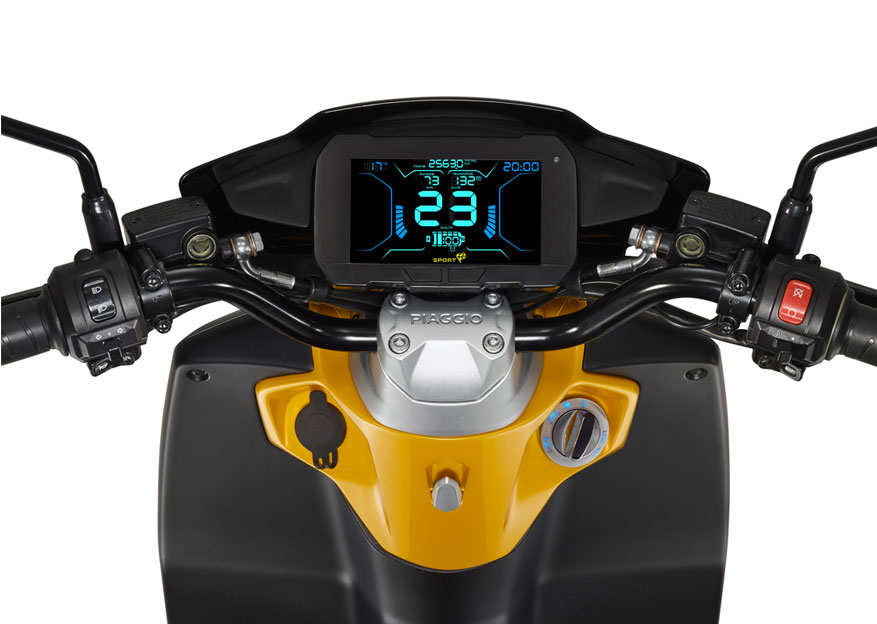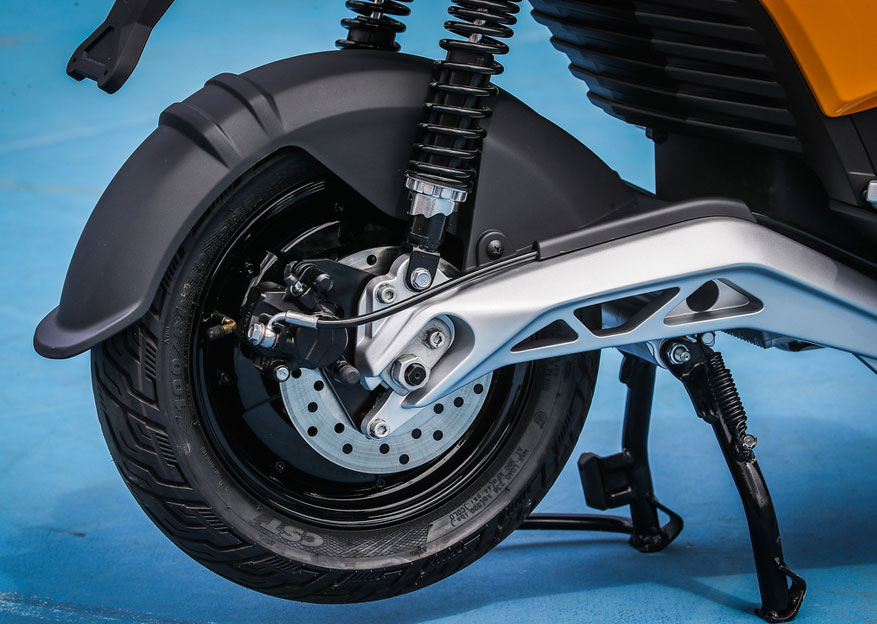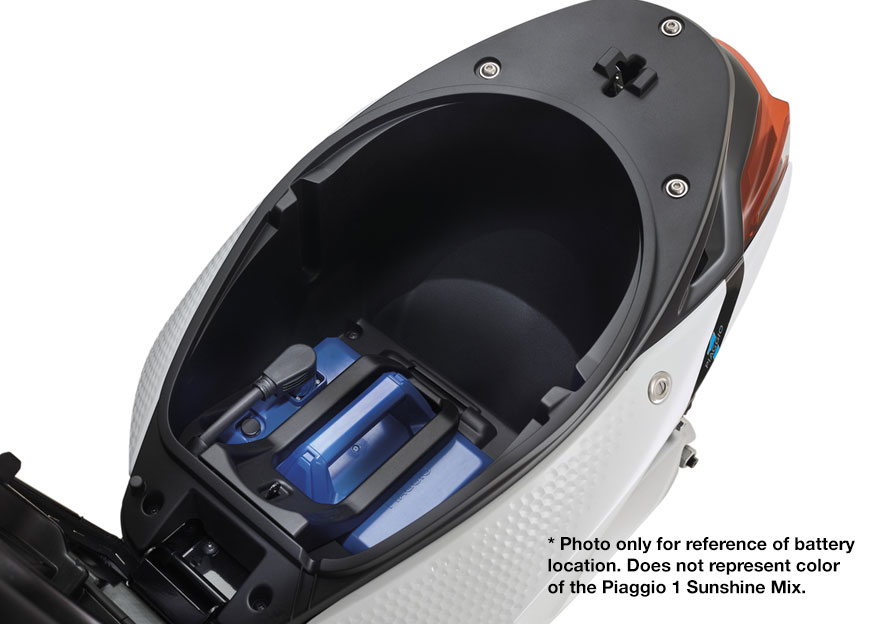The 2023 Piaggio 1 Active effortlessly combines electric mobility with the same original style, quality and engineering that are synonymous with the Piaggio brand. The front shield features the classic “neck tie” and provides protection that doesn’t come at the cost of elegance, while attention to detail is evident in elements such as the dual cover seat with its glossy side finish and the intriguing hexagonal pattern, inspired by the Piaggio logo, on the front shield and side panels.
With an under seat compartment large enough to house a quarter helmet, the Piaggio 1 Active is the only e-scooter in its category to offer such generous storage. Attention has also been given to the ergonomics, with the seat-footwell-handlebar triangle following the traditional proportions of a Piaggio scooter. The spacious footwell creates a comfortable riding position while passengers can rest their feet on sturdy foldaway foot pegs. Last but not least are a handy bag hook and a USB port with a waterproof rubber cover in the leg shield back plate.
The handlebar houses a large 5.5-inch color LCD digital display features a twilight sensor that optimizes the background and font colors for the prevailing light conditions to ensure it is always legible, while the stylish, clear screen graphics are easy to read at a glance. The combination of lightweight build, advanced lithium ion battery and KERS (Kinetic Energy Recovery System) function that recharges during deceleration, means the Piaggio 1 Active delivers excellent range.
=
The NEW 2023 Piaggio 1 Active at a glance:
Speed: 24 MPH with ECO Mode and 37 MPH in Sport Mode
Range with a full charge: 52 miles on ECO mode and 31 miles on Sport
Power: 2 kw ( 3 kW peak ) Torque: 66 lb-ft
Battery: 2.3 kWh lithium ion battery; 48V; 48 Ah weighs about 33-lbs and takes 6 hours to gain a full charge
Technical Specs: 5.5 LCD digital instrument cluster, ECO, Sport, and Reverse ride modes, Full LED Lighting, Keyless ignition with side lock. Piaggio 1 is equipped with Kinetic Energy Recovery System ( KERS ) which allows the system to recover energy while braking or during deceleration.

